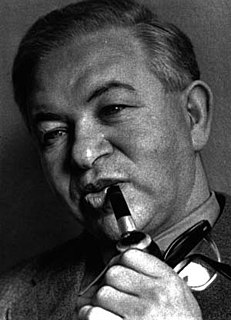
Arne Emil Jacobsen, Hon. FAIA 11 February 1902 – 24 March 1971) was a Danish architect and furniture designer. He is remembered for his contribution to architectural functionalism and for the worldwide success he enjoyed with simple well-designed chairs.

Jan Gehl Hon. FAIA is a Danish architect and urban design consultant based in Copenhagen whose career has focused on improving the quality of urban life by re-orienting city design towards the pedestrian and cyclist. He is a founding partner of Gehl Architects.
Gudmund Nyeland Brandt was a Danish landscape architect who was internationally renowned.

Category:Knights of the Order of the Dannebrog

Mariebjerg Cemetery is located in Gentofte north of Copenhagen, Denmark. It was laid out between 1926 and 1933 to the design of the landscape architect Gudmund Nyeland Brandt and is considered an important example of European Modernist landscape architecture. Its design has inspired many other cemeteries both in Denmark and abroad.
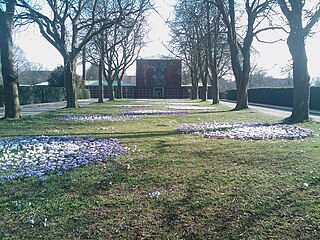
Søndermark Cemetery is a cemetery in the Frederiksberg district of Copenhagen, Denmark, located on Roskildevej, opposite Solbjerg Park Cemetery. It is the youngest of the three cemeteries in Frederiksberg Municipality.

Knud Arne Petersen was a Danish architect and director of Tivoli Gardens in Copenhagen from 1899 to 1940. Apart from his engagement with Tivoli Gardens, where he created several prominent buildings, including the Chinese Tower and the Nimb complex, he was most active as an exhibition architect, representing Denmark at several World Fairs.

Holger Jacobsen was a Danish architect. His best known work is Stærekassen, an extension to the Royal Danish Theatre on Kongens Nytorv in Copenhagen.

Paustian House is a large furniture showroom located on the waterfront in Copenhagen. Completed in 1987, it is one of the most notable works in Denmark by prize-winning architect Jørn Utzon, who also designed the Sydney Opera House. Utzon's son Kim designed two adjacent buildings which were completed in 2000.

The Fredensborg Houses form a housing complex in natural surroundings on the outskirts of the small town of Fredensborg in the north of Zealand, Denmark. The houses were designed by Jørn Utzon for Danes who have worked for long periods abroad.

Utzon's House in Hellebæk is a one-storey private home in Hellebæk, not far from Helsingør, in Denmark's northern Zealand. Built by the world-famous architect Jørn Utzon for his family and himself in 1952, its innovative design was welcomed by the world of architecture.
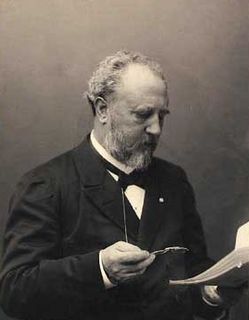
Emil Blichfeldt was a Danish architect who worked in the Historicist style.
Svend Albinus was a Danish architect. From 1930 - 39 he worked at Kaj Gottlob design studio. Albinus received the Neuhausen Prize in 1927 and the Prize of the City of Frederiksberg in 1943. He was the leader of KABS architect department from 1939–54, head of the SBI building research committee from 1954–56 and was then chief architect of the Ministry of Housing from 1956 - 71.
Einar Ambt was a Danish architect.
A bibliography of books and material related to the Architecture of Denmark:
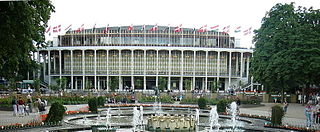
Tivoli Concert Hall is a 1,660-capacity concert hall at Tivoli Gardens in Copenhagen, Denmark. The building, which was designed by Frits Schlegel and Hans Hansen, was built between 1954 and 1956. The concert hall is both used for classical music, both by the Tivoli Symphony Orchestra and visiting musicians, for musicals and for other shows and events.
Lene Dammand Lund is a Danish architect and educator. Since April 2012, she has been rector of the schools of architecture, design and conservation at the Royal Danish Academy of Fine Arts.
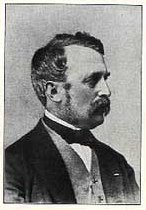
Harald Conrad Stilling was a Danish architect who was active in Copenhagen during the Late Classical period of the mid-18th century. He received the C. F. Hansen Medal in 1841.
Liffa Gregoriussen née Arge (1904–1992) was a Faroese fashion designer, shopkeeper and feminist. While running her own Tórshavn business in hats and corsets for 50 years, in 1952 she became a co-founder and one of the most active members of the Tórshavn Women's Association, working in particular for collaboration with women's organizations in the other Nordic countries. She is also remembered for taking part in the city's first fashion show. Aged 69, after several young models had presented their attire, Gregoriussen became the star of the event as she appeared in an attractive black corset, black stockings, a festive hat and with a rose in her hand.
Tietgensgade is a street in central Copenhagen, Denmark. It runs from H. C. Andersens Boulevard in the northeast to Kvlgtorvgade at the Meat-Packing District in the southwest, linking Stormgade in the city centre with Halmtorvet and Sønder Boulevard in Vesterbro. The street follows the rear side of Tivoli Gardens and Copenhagen Central Station. The viaduct that carries it across the railway tracks at the central station is known as Tietgensbro. A series of staircases and lifts provides direct access from the viaduct to the station platforms.














